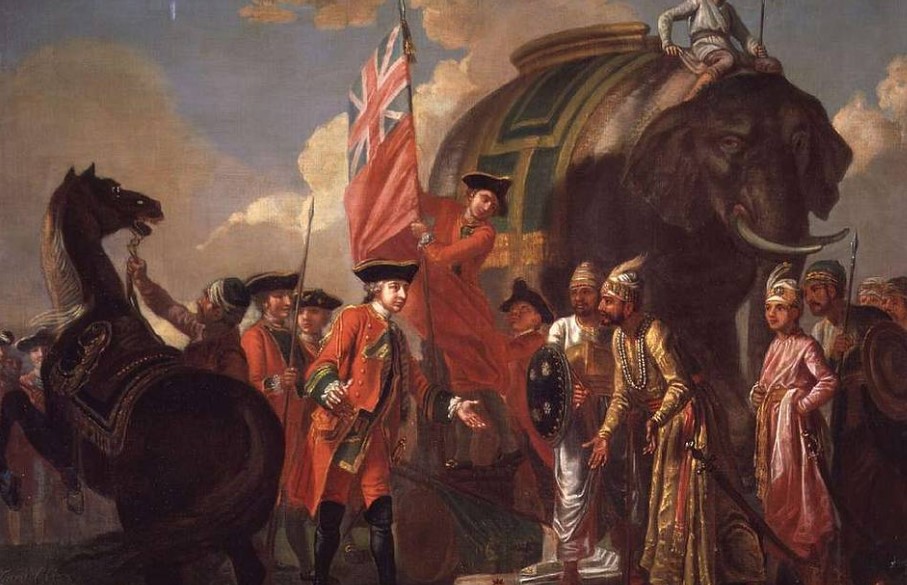
Modern History MCQs – 1 (Arrival of Europeans in India)
Most important multiple choice questions from the chapter – Arrival of Europeans in India MCQs.
Home » UPSC Study Materials » Prelims Express » Chapterwise MCQs » Modern History MCQs » Modern History MCQs – 9 (Partition of Bengal and Swadeshi Movement)
Partition of Bengal and Swadeshi Movement MCQs with answers and explanations for UPSC and Other examinations.
1. In which of the following sessions of Indian National Congress, the resolution of ‘Swaraj’ was passed for the first time ?
(a) Banaras Session, 1905
(b) Calcutta Session, 1906
(c) Surat Session, 1907
(d) None of the above
Correct Answer – (b) Calcutta Session, 1906
2. Consider the following statements about Dadabhai Naoroji :
1. He wrote a book ‘Poverty and UnBritish Rule in India’.
2. He was elected as a member of British Parliament.
Which of the above statements is/are correct ?
(a) 1 only
(b) 2 only
(c) Both 1 & 2
(d) None of the above
Correct Answer – (c) Both 1 & 2
3. Which one of the following movements contributed to a split in the Indian National Congress ?
(a) Swadeshi Movement
(b) Quit India Movement
(c) Non-cooperation Movement
(d) Civil Disobedience Movement
Correct Answer – (a) Swadeshi Movement
4. Which among the following events occurred last ?
(a) Annexation Policy
(b) Partition of Bengal
(c) Permanent Settlement
(d) Subsidiary Alliance
Correct Answer – (b) Partition of Bengal
5. Who among the following viceroy of India was responsible for the partition of Bengal ?
(a) Lord Harding
(c) Lord Lytton
(b) Lord Curzon
(d) Lord Minto
Correct Answer – (b) Lord Curzon
6. Which among the following methods were used by the nationalists against the partition of Bengal ?
1. Boycott
2. Swadeshi
3. Non-co-operation
4. National education
Select the correct answer :
(a) 1, 2 & 3
(c) 1, 3 & 4
(b) 2, 3 & 4
(d) 1, 2 & 4
Correct Answer – (d) 1, 2 & 4
7. The Swadeshi Movement was launched in the response of which among the following events ?
(a) Arrest Lala Lajpat Rai
(b) Imprisonment of Lokmanya Tilak
(c) The partition of Bengal
(d) Death sentence to Chapekar Brothers
Correct Answer – (c) The partition of Bengal
8. Consider the following statements about Swadeshi Movement :
1. It did not appeal to masses.
2. It did not spread in south India.
Which of the above statements is/are correct ?
(a) 1 only
(b) 2 only
(c) Both 1 & 2
(d) None of the above
Correct Answer – (d) None of the above
9. The partition of Bengal which was announced in 1905 was abolished in which among the following years ?
(a) 1906
(b) 1916
(c) 1911
(d) 1909
Correct Answer – (c) 1911
10. The transfer of the Indian Capital from Calcutta to Delhi was announced in which among the following years ?
(a) 1906
(b) 1916
(c) 1911
(d) 1909
Correct Answer – (c) 1911
More questions are coming soon. Join us on Whatsapp for latest updates: Join CivilsCracker on Whatsapp

Most important multiple choice questions from the chapter – Arrival of Europeans in India MCQs.

Most important multiple choice questions from the chapter – Battle of Plassey and Battle of Buxar MCQs.

Most important multiple choice questions from the chapter – Social and Religious Reform Movements MCQs.

Most important multiple choice questions from the chapter – Anglo Mysore Wars and Anglo Maratha Wars MCQs.

Most important multiple choice questions from the chapter – Governor Generals of India MCQs.

Most important multiple choice questions from the chapter – Revolt of 1857 MCQs.

Most important multiple choice questions from the chapter – Organizations before Indian National Congress MCQs.

Most important multiple choice questions from the chapter – Important Sessions of Indian National Congress MCQs.

Most important multiple choice questions from the chapter – Surat Split and Lucknow Pact MCQs.

Most important multiple choice questions from the chapter – Arrival of Gandhi and Jallianwala Bagh Massacre MCQs.
We are adding new Notes, Chapterwise MCQs, Quizzes, Previous Years Questions everyday
We are adding new Notes, Chapterwise MCQs, Quizzes, Previous Years Questions everyday